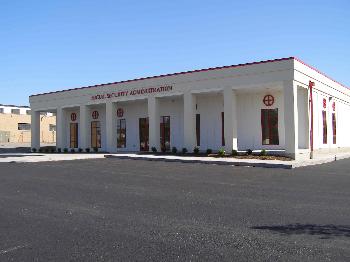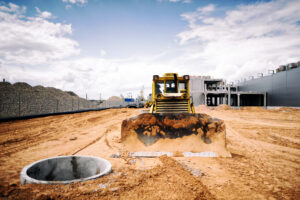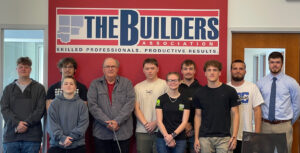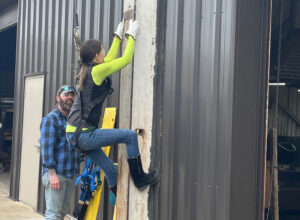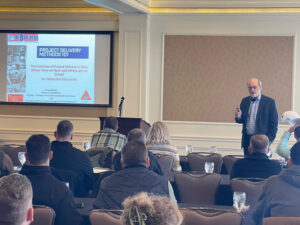Client: Social Security Administration
Adolph Johnson & Son Co. Relies on New Materials, Time-Tested Skills. Paul Johnson sees the new Social Security Administration office in downtown Youngstown as more than a design-build project. It’s a symbol that Youngstown is on the right path to revitalizing its downtown area.
“It’s nice to have a new building in Youngstown,” said Johnson, president of Adolph Johnson &
Son Co. “It shows Youngstown is moving in a positive direction.”
The company was awarded a design-build contract from Youngstown SSA, LLC, and Johnson was determined from the start to make the building something special. He wanted the 13,000-square foot building at 354 East Federal Plaza to be out of the ordinary — and that’s why he specified an extraordinary material for the building’s public face.
“The exterior walls are made of autoclaved aerated concrete (AAC),” Johnson said. The building was designed with vertical load-bearing panels; a mix of thick-thin
panels gives the illusion of columns. Stepped-out horizontal panels at the parapet add another design element that enhances a classic Greek look.
Johnson settled on AAC because the material has many desirable qualities. The material is
remarkably energy efficient, so it reduces heating and cooling costs. It’s an inorganic
material that does not emit toxic vapors. It’s insect and fire resistant, and its acoustic properties muffle outside noises — a plus for workers in office buildings on busy streets.
AAC has been widely used for new construction in Europe for decades, but it has only recently been introduced to the United States, Johnson said. That’s why working with union carpenters has been an important component of the project’s success. “We taught our people on the job,”
Johnson said.
For union carpenters, training — whether it’s in the classroom or on the job — is standard operating procedure, and the union workforce approached the AAC training with a professional attitude.
Union carpenters make the most of such on-the-job training because they bring a solid educational foundation to the job site. Union carpenters also tackled framing, dry wall, millwork and cabinetry for the $1.5 million project, and the combination of classroom training and on-the-job experience helped Johnson, project manager Greg Birskovich and site
manager Mark Dibell keep the project on schedule and within budget. It wasn’t always easy, Johnson said, because the government approval process at various project stages moved more slowly than in the private sector. Johnson started work in August 2005 and completed the building in May 2006. “That’s fairly fast for this type of project,” he said.
The building interior is pretty standard for a government office building and follows a layout provided by the client, Johnson said. There are counters, interviewing stations, a private interview office and other typical office features.
But Johnson, who has served as chairman for the local Easter Seals Society, went beyond code requirements for accessibility.
“I believe strongly in accommodating those with disabilities,” Johnson said. He invited an associate (who has a disability) from the society to tour the building and offer comments. “He had one or two suggestions, and we implemented them,” Johnson said. “And we did some extra things to make the project attractive — more so than required.”
Johnson hopes that the project will not only encourage more projects to support Youngstown’s downtown revitalization, but also will spark an interest in the use of autoclaved aerated concrete. “It’s a unique material,” he said. And if demand for the material’s use grows, Adolph Johnson & Son Co. will be ready. “We’ve talked with the union about creating a formal training program for AAC,” Johnson said, “and now we have people who have experience working with it.”
